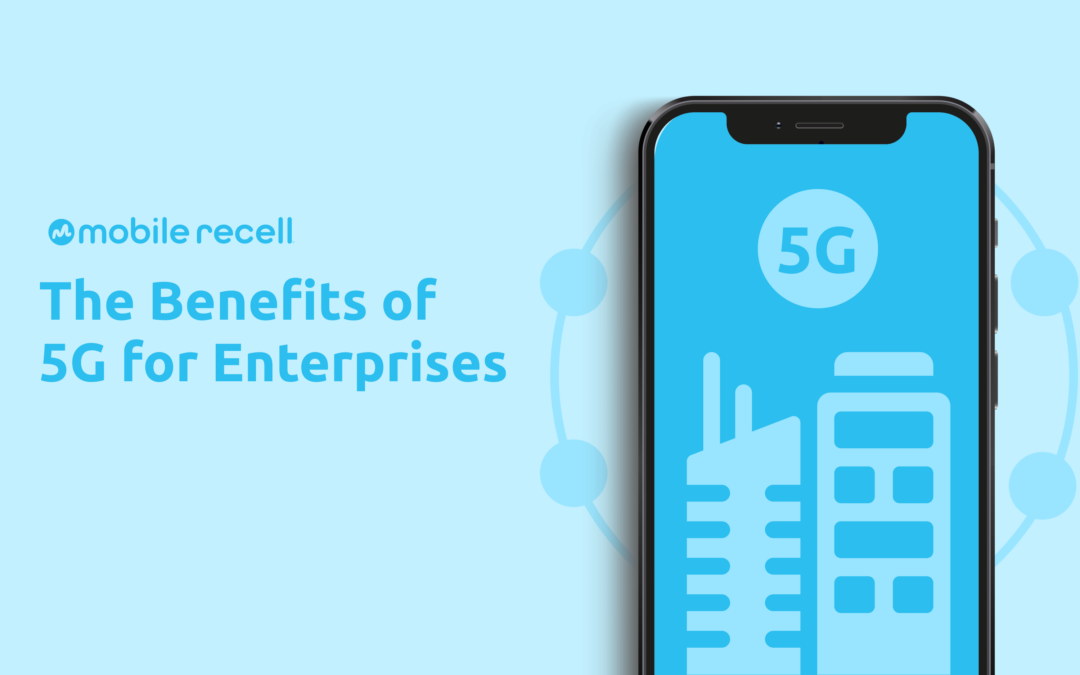What is 5G and Why is it Beneficial for Businesses?
5G is the fifth-generation cellular technology standard for wireless mobile networks. Designed to significantly increase the responsiveness of wireless networks, users can expect speeds as high as 20 gigabits per second (Gbps)—more than 100 times faster than 4G.
Although full implementation of the new and powerful wireless technology has been a work in progress, 5G is becoming more accessible.
In 2020, 5G was only accessible to around 15% of the global population. However, since 5G devices are more available than any previous rollout of devices—such as 4G or 3G—it will be accessible to 60% of the global population within the next five years.
Additionally, 5G-enabled smartphones are forecast to rapidly gain market share and reach 69% by 2023, overtaking 4G shipments.
Mobile carriers are gradually lowering prices for 5G devices, making it easier for consumers and corporations to upgrade their devices.
“7 out of 10 business owners believe that 5G will help their company overcome the negative impact of the COVID-19 pandemic.”
– Wendy Taccetta, Senior VP for Nationwide Small Business & Channel Chief at Verizon Business
5G technology delivers a better user experience and comes equipped with higher data speeds, greater data capacity, and power savings which, in turn, enables more efficient remote work.
Higher Data Speeds
Network speed and connectivity are constant obstacles for remote workforces.
Depending on the type of device an end user has, average network speed and poor connectivity can result in technological issues like slow-loading apps and web pages, screen freezes, and intermittent drop-outs.
Adopting a solution that provides stable connectivity and fast internet speed will boost employee performance and productivity.
Higher data speeds are one of the main benefits of 5G technology. 5G can reach speeds up to 10GB per second, which is about 100 times faster than 4G, allowing downloads to complete in seconds instead of minutes.
Greater Data Capacity
4G networks often have a limit on the amount of data that can be transmitted simultaneously. Since 5G devices can handle a higher data capacity, there is less stress put on mobile networks, which can increase the number of devices that a wireless network can support.
5G devices have a higher network speed and can handle a higher data capacity because 5G data is transmitted through its own tower.
5G towers are smaller than their predecessors—4G towers—and use a more advanced spectrum, known as mmWave high-frequency bands, to transmit data.
Using a different spectrum than 4G supports higher bandwidth connections, which puts less stress on mobile networks and reduces data costs and network disruptions. In turn, this increases the number of devices a wireless network can support and the amount of data that can be transmitted simultaneously.
More Energy Efficient
Most enterprises strive to be sustainable and environmentally conscious in various aspects of their businesses, but are expected to keep up with demands for new technology and advanced IT solutions.
5G technology allows enterprises to be energy efficient, as 5G greatly reduces energy consumption and power use through cell towers.
Older generations of wireless mobile technology typically used less than 20% of power generated by cell towers to transfer data. The rest of the energy produced was wasted, as the towers ran continuously—even when no data was sent or received. This was primarily due to inefficient cooling systems and battery units, and resulted in excessive energy use.
5G cell towers contain advanced technology, allowing them to shut down automatically when there is no data traffic, which can reduce tower energy consumption and power use by 40%.
Aside from energy-efficient cell towers, 5G devices also use approximately 90% less energy than 4G devices when in use.
More Efficient Remote Work
5G devices come equipped with built-in computing intelligence, enabling more efficient remote work through effective device-to-device communication, greater bandwidth, and lower latency.
Latency is the time or amount of delay between when you give your device an instruction and when it does it. With lower latency, end users can download, upload, and share files without worrying about network connection delays or devices suddenly crashing.
5G can also support up to an estimated one million devices per square mile, which allows enterprises to easily support thousands of devices in their offices and reduces the strain on wireless networks in residential areas where remote work might require several devices to be used simultaneously.
Additionally, 5G technology allows IT administrators to seamlessly manage company servers and troubleshoot devices remotely, keeping remote workers online and equipped with the technology they need to complete their work efficiently.
The Go-To Solution for IT Asset Recovery & Refresh Needs
5G technology will revolutionize how enterprises network and utilize mobile devices to work smarter, not harder.
Businesses and end users rely on mobile devices and wireless networks now more than ever.
Employees are often issued corporate-owned IT assets—like smartphones, laptops, tablets, and monitors—to work remotely.
As these devices reach the end of their lifecycles, investing in an IT asset recovery solution is essential to the recovery of each device before it’s redeployed, resold, or recycled.
When your organization is ready to replace legacy devices with 5G technology, let Mobile reCell help you recover and resell those legacy devices, offsetting the costs of newer 5G devices.
Mobile reCell can help redesign and streamline core operations to integrate IT asset recovery and management software and services with your 5G technology.
Learn how you can further benefit from working with Mobile reCell.
Follow us on social media!
See Mobile reCell’s Recovery Platform in action.

